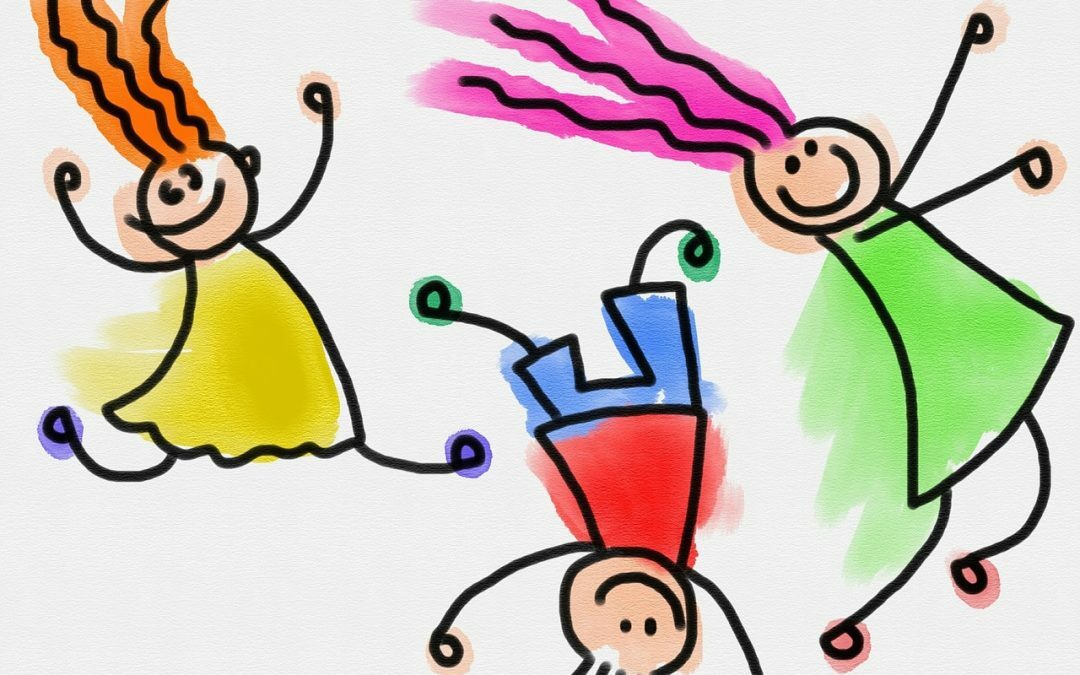I am teaching a very active, clever and energetic group of pre-schoolers this year. Sometimes I have to work hard to keep them in line, but I wouldn’t trade them for any other team because they give me what I think we teachers like best: quick and visible progress, tangible results of our work. My group of toddlers, with whom I started working about six months ago, is already trying to SPONTANEOUSLY COMMUNICATE with me using the vocabulary and language means they have learned and… their imagination (and this at the age of five or six has no limits).
I decided to analyse these rapid advances and, according to me, three main factors make children begin to use a foreign language as a tool for communication and this is always my overriding goal in teaching, because what do we get out of dozens of mechanically associated vocabulary from which the child is not able to build a sentence or apply in the right context?
‘NO MOTHER TONGUE’ POLICY
We consistently adhere to the principle of “NO POLISH.” In class, children are not allowed to speak Polish, well, unless they ask nicely: “Can I speak Polish?” Of course, as you may have guessed, this is a question they master perfectly as one of the first. Very quickly, too, their great need to communicate makes little gems like:
S: Can I speak Polish?
T: No, I’m sorry, not now.
S: Yyyy… Teacher, teacher… I’m toilet.
T: You mean: Can I go to the toilet?
S: YES!
NOISE? WHY NOT!
Our lessons are not quiet. I try to plan my classes so that there is always interaction not only between me and the group, but also between the students. That’s why my six-year-olds work in pairs, play games that require group cooperation, sometimes we even arrange a “safe competition” (that is, a competition in groups that ends in a tie). The class is then sometimes noisy and even if the parents waiting at the door ask what has been going on, I reply, “Ladies and gentlemen, your children have had their first conversations in English!” The conversations look more or less like this (example dialogue between students while playing restaurant):
S1: Hello.
S2: Hello.
S1: Please tomato soup.
S2: No tomato soup.
S1: Please ice cream.
S2: This one?
S1: Yes. Thank you! Bye, bye!
As you can see, not always quite correctly, not always 100% in English, but communication goal is completed! And let’s agree – in this way the child is already able to talk with locals abroad 😉 The main thing is not to be afraid and act, and each scene played during the class increases not only the student’s linguistic competence (especially if an alert teacher catches and corrects something), but also self-confidence.
FOOLISHNESS
This definitely motivates my kids the most! I make sure that there is a lot of KIND humour in our lessons. And what do children like? Very different things from adults. A hit in my group this year is the word UNDERPANTS. We learned it while learning vocabulary related to dressing and it definitely rocked my group. We often have dialogues like this:
T: What are you wearing?
S1: I’m wearing underpants! Ha, ha, ha.
T: Ask Tom.
S1: Are you wearing underpants?
S2: No, I’m not! Ha ha ha.
T: Ask Vendula: What coulour….
S3: What color are your underpants? Ha, ha, ha…
We explore these “underpants” over and over again, and meanwhile, without realizing it, the children use the Present Continuous tense and consolidating not only affirmative sentences, but also negations and questions! Of course, we also learn about other parts of the closet, but such long and complicated dialogues interest them only with you know what… the pants – boring, panties rule!
The second type of “controlled silliness” that I practice in class is combining words from different vocab banks, which seemingly do not fit together, in a fun (for my children) way. Some time ago we learned about the verb CAN and were consolidating sentences using it. We sat in a circle, and I modeled a question linking the verbs the children had learned and the objects in the classroom:
T: Tom, can you sleep on the clock?
S1: Ha ha ha! No, I can’t!
T: Ask Dana.
S1: Can you jump on the window?
S2: No! Can you fly on a vacuum cleaner?
S3: No!!! Can you sleep in a bin?
And so on…. And I assure you they can go on like this for a long time.
It’s worthwhile sometimes allow children be a little crazy, give them some freedom. They will surely surprise us with how beautifully and creatively they are already able to use a foreign language!
The author of this post is Ola Komada – methodical director of Edu Bears, co-author of the Teddy Eddie method. A teacher by heart, well-experienced in work with young learners. Find out more on the method and how to adopt it to your language school by visiting local websites teddyeddie.cz and teddyeddie.sk!

